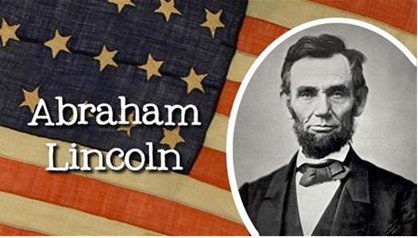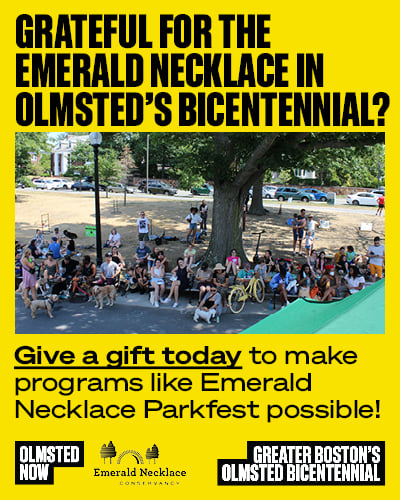For over three decades, the Asian Community Development Corporation (ACDC) has worked in the Greater Boston area to create and preserve affordable, healthy neighborhoods for underserved Asian American communities. Olmsted Now sat down with Christine Nguyen and Mabelle Zhang of ACDC to discuss park equity and greenspace activation. This interview, conducted in summer 2022, has been edited for length and clarity.
Could you introduce yourselves? How would you describe your program?
Christine Nguyen: My name is Christine Nguyen, I use she/her pronouns, and I’m the director of development and communication at ACDC. So, in my role I oversee fundraising and communications operations, which includes website, social media, newsletter, traditional media outreach… Mabelle is the main project person on Hudson Street Stoop, so I’ll hand it over.
Mabelle Zhang: Thanks, Christine. Hi, I’m Mabelle. I am the associate for policy and community planning at ACDC, and one of the things I do here is I’m the project manager for Hudson Street Stoop. ACDC is a small team, and I would say a lot of us have had our hands in Hudson Street Stoop as it’s evolved. It was an idea from our executive director, Angie, that really blossomed into this amazing project. Besides me, Christine and our director of programs, Jeena, are the core staff members working on it. And then we also have a committee of residents and public art officials who also oversee this process. So, just a quick overview of the project: Hudson Steet Stoop is a rotating public art initiative. Each installation is supposed to be from 12 to 18 months long. The goal of it is to activate this greenspace called One Greenway in Boston’s Chinatown. It’s actually wedged between two affordable housing developments that ACDC developed.
CN: One of the things that the Olmsted Now grant is helping to fund is ongoing activation for the [Storytell & Sway by Gianna Stewart] installation.
MZ: As I said before, it’s temporary. So actually, we are closing [Storytell & Sway] our first installation. The deinstall will be sometime in October [2022]. So, from now to then, we’re going to have three activations which the Olmsted Grant will go towards. Two of them will be targeting youth and families in the neighborhood—they’re going to be two play activities—and then the last one will be our closing ceremony or closing activation. During that time, we’re also starting the process of finding a new installation. We’re going to have three community design sessions where community members come to the space, meet with artists, and co-create—do activities, feel out the space, try to convey what they want to the artists. Those are the two projects going on at the same time that the grant will be supporting.

How did you decide to use this greenspace, One Greenway?
CN: The idea, as Mabelle mentioned, came from Angie and working with Jeena, our director of community programs and design, because of some of the feedback that we actually heard from our residents. So, these two developments that abut the One Greenway Park—66 and 88 Hudson—one is an affordable rental building, and one is affordable condos. What we’ve heard from a lot of the residents, some of them have small children, is that while there’s a greenspace with benches, intended as all-purpose, open space park, what they observed was that a lot of market-rate residents were using this space as a dog park. Which is fine, you know, but the issue was that some folks were not cleaning up after their pets and maintaining the space in a way that everyone could use it. And so families felt like, “Oh, is this really a space for me, or is this a dog park?” and there wasn’t a clear indication of what the space could be used for. And so, based on some of that feedback, our staff decided to come up with Hudson Street Stoop in order to invite more people—families, individuals, especially folks living in our affordable developments—to use the space, feel comfortable using the space, and really also share ownership of this public space that should be available to everyone.
MZ: I can also quickly add that beyond our development, the site has had a long history in the Chinatown community. The parcel itself is called Parcel 24, and during the beginnings of Chinatown, from the 1800s through the 1900s, it was a really bustling multicultural neighborhood. There were a lot of Chinese, Syrian immigrants, and it was known as the front stoop of Chinatown. It used to be a place where kids could play—it was where the cool kids hung out. And during the 60s, with urban renewal, the state actually took that land through eminent domain and then used it during the highway construction, so it became an on-ramp to the highway. When they took the land, everyone on this street was displaced for Parcel 24, and then the city used the land until the Big Dig, when they no longer needed it, and then it was part of this long 10, 20-year community effort to get this land back. Because it was taken, and residents weren’t properly compensated, and they were displaced. So, with that land back, ACDC was able to develop it into affordable housing. But even though we have affordable housing now, it doesn’t mean that the community that was once there—where kids played on the street, where everyone knew each other—that doesn’t mean that’s back. Part of the idea of this program is to try to bring back that culture, to try to bring back the front stoop of Chinatown.
Why do parks need more equity in spatial justice programming?
MZ: This is something that we’ve seen a lot through our place-keeping program. Spaces—public spaces, parks—are often coded as non-community land. We saw when we first created this, even though [One Greenway] was intended for community use, most people who ended up using it were dog owners using it as a dog park, and community members might not feel comfortable there, might not know it’s even available, just because it is between these two buildings. They might not know it’s publicly accessible to non-residents. So, for this initiative, we think it’s important to have programming, because it lets community members know that this space is for everyone. It builds ownership. We love to have community members and the building residents be part of this process of event planning so that they can start to feel ownership of this area.
CN: I’ll also add that Hudson Street Stoop and ACDC’s other place-keeping programs and initiatives really are leveraging arts, culture, and play to engage residents—particularly folks from working class backgrounds, immigrant backgrounds—to take part in some of these planning decisions in the community. I think a lot of times folks first interact with civic engagement through some of ACDC’s programs. A long-term impact or benefit that we hope to drive is more resident involvement, community involvement. So, for instance, one of the activities that we’re looking to do at the Hudson Street Stoop, One Greenway Park, site is gathering resident feedback on a parcel of land that will be developed across the street called R1. It’s like: OK, so now that folks are familiar with this space at One Greenway Park, let’s introduce them to the idea of, or encourage them to be involved in, visioning and planning for what’s going to happen next in this other space, in addition to what’s going to happen in the future at Hudson Street Stoop.

What about parks and public spaces makes you personally most grateful?
MZ: I can give an answer for the space that we’ve been activating. So, we are partnering with Tufts. They have provided a team of researchers to evaluate the space and measure its impact. And through COVID, we found out that this space, through its activation—the swings [Storytell & Sway]—has really served as a community lifeline. Oftentimes parks during COVID are the only places that you can go outside and see other people, do other activities. But also with the swings, we found that people were sharing information about jobs with each other, say they lost their job, or finding what places had masks or vaccines. So, it’s not just a greenspace, but it also turned out to be a community hub and lifeline during the pandemic.
CN: Related to that, in part of that preliminary study by Tufts, some of the survey questions touched on themes of belonging, connection, community, feeling connected to their neighbors, and also a sense of safety—given the fear that’s been going around in a lot of AAPI communities as a result of anti-Asian hate and violent attacks. In the long term of trying to activate this space so that folks feel like they belong in the community and feel safe in their communities, I think just hearing some of that initial feedback from residents makes me feel grateful that this is something that we’re working towards, and we’re getting the response that it’s addressing some of these things.
Because it does seem like the swings of Storytell & Sway have been such a hit, and they look beautiful, too, I was just wondering how people feel about the swings leaving. I’m sure that whatever comes next will also be great, but it seems like people really have appreciated those swings, and so it also seems sad that they’re going.
MZ: That’s a great question, and that’s something that residents have shared with us. One resident even shared, “Oh, we’re going to make a petition and say you can’t take it down.” The artist, Gianna, really hit it out of the park. She made something that used arts and culture and also incorporated what residents really needed, which was something usable, something they could play with. We’ve had this discussion at ACDC, and something that we discussed is: Do residents really love this because—well, it is an amazing project, but do they love it for this project, or do they love it because the space has ever been activated before? Before it was just a piece of grass. So, we’re going to move forward with doing the second installation. But we are open to exploring the idea, after this install, of having a permanent swing. In the meantime, the artist, Gianna, is exploring turning these swings into benches—gliding benches, so they still have that little sway—and then placing them around Chinatown. So, hopefully even if we don’t move forward with the permanent install, they can still stay in the community and be used.
That sounds great. The next few questions are quick. I’m asking this one even though I think often the answer is the greenspace that you’re working with. But I’ll still ask, what is your favorite greenspace in Boston?
MZ: This is [partially] in Cambridge, but there’s this nice park on the other side of the bridge. It has a little skate park under the highway, and I think it’s been a really great adaptive use of the highway space over there. I go running there quite often. It’s called North Point Park.
CN: Outside of One Greenway Park and Hudson Street Stoop, I’ll say the arboretum by Forest Hills, down in Jamaica Plain. That’s something I dream about, something that we could eventually create or aspire to and have that much expansive space in Chinatown.
Who or what is your biggest inspiration?
CN: I think for me, the people in the community who we’re working with, from high school students involved in the program to elders who enjoy the installations.
MZ: Yeah, I would second that. They come in with so much energy and great ideas. Truly, it’s the residents and the youth.
Lastly, what three to five words capture the essence of your program?
MZ: “It’s a healing journey.” We’re trying to heal the community from the trauma of the highway, COVID, from a lot of things.
CN: I’d say resident-driven and imaginative.




